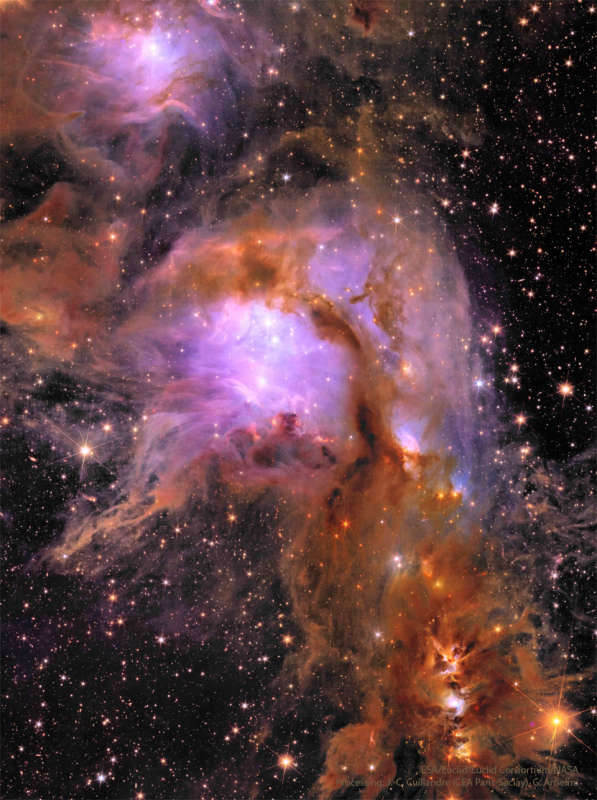Credit & Copyright: ESA,
Euclid,
Euclid Consortium,
NASA;
Processing:
J.-C. Cuillandre
(CEA Paris-Saclay),
G. Anselmi
Explanation:
Star formation can be messy.
To help find out just how messy,
ESA's new
Sun-orbiting
Euclid telescope recently captured the most detailed
image ever of the bright star forming region M78.
Near the image center,
M78 lies at a distance of only about 1,300
light-years
away and has a main glowing core that spans about 5 light-years.
The
featured
image was taken in both
visible and
infrared light.
The purple tint in
M78's center is caused by dark
dust preferentially
reflecting
the blue light of hot, young stars.
Complex dust lanes and filaments can be traced through this
gorgeous and revealing skyscape.
On the upper left is associated star forming region
NGC 2071,
while a third region of star formation is visible on the lower right.
These nebulas are all part of the vast
Orion Molecular Cloud Complex
which can be found with even a small telescope
just north of Orion's belt.
More Euclid Sky Candy:
Recent
images released from Euclid
1999 2000 2001 2002 2003 2004 2005 2006 2007 2008 2009 2010 2011 2012 2013 2014 2015 2016 2017 2018 2019 2020 2021 2022 2023 2024 2025 |
Yanvar' Fevral' Mart Aprel' Mai Iyun' Iyul' Avgust Sentyabr' Oktyabr' Noyabr' Dekabr' |
NASA Web Site Statements, Warnings, and Disclaimers
NASA Official: Jay Norris. Specific rights apply.
A service of: LHEA at NASA / GSFC
& Michigan Tech. U.
|
Publikacii s klyuchevymi slovami:
M 78 - emissionnaya tumannost' - otrazhatel'nye tumannosti
Publikacii so slovami: M 78 - emissionnaya tumannost' - otrazhatel'nye tumannosti | |
Sm. takzhe:
Vse publikacii na tu zhe temu >> | |
